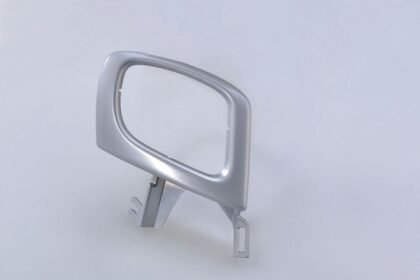Riding a motorcycle can be a thrilling experience, offering a sense of freedom and adventure that few other activities can match. However, this excitement comes with its own set of risks. To ensure a safe and enjoyable ride, it’s crucial to follow essential safety guidelines. Here are some key practices every motorcyclist should adhere to.
1. Wear the Right Gear
The first and most crucial step in motorcycle safety is wearing the appropriate gear. Proper attire can significantly reduce the severity of injuries in case of an accident. Here are the must-haves:
- Helmet: Always wear a DOT-approved helmet. It protects your head from serious injuries and is legally required in many places.
- Jacket and Pants: Opt for leather or reinforced textile jackets and pants with padding in key areas like the elbows, knees, and back.
- Gloves: Wear gloves that provide a good grip and protect your hands from abrasions and impacts.
- Boots: Choose sturdy, over-the-ankle boots to protect your feet and ankles.
- Eye Protection: Use a helmet with a visor or wear shatterproof goggles or sunglasses to protect your eyes from wind, debris, and insects.
2. Perform Regular Maintenance
Keeping your motorcycle in top condition is essential for safety. Regular maintenance checks can prevent breakdowns and accidents. Here are some maintenance tips:
- Tires: Check tire pressure and tread depth regularly. Replace tires that show signs of wear and tear.
- Brakes: Ensure that your brakes are functioning correctly. Check brake pads and fluid levels frequently.
- Lights: Make sure all lights, including headlights, brake lights, and turn signals, are working properly.
- Fluids: Regularly check and top up engine oil, coolant, and other essential fluids.
- Chain and Sprockets: Keep the chain clean, lubricated, and properly tensioned. Replace worn sprockets.
3. Follow Traffic Laws
Adhering to traffic laws is vital for your safety and the safety of others on the road. Here are some rules to keep in mind:
- Speed Limits: Always observe and adhere to speed limits. Riding at high speeds reduces your reaction time and increases the severity of accidents.
- Lane Usage: Use designated motorcycle lanes where available. Avoid weaving between lanes and cars.
- Signals: Always use your turn signals to indicate your intentions to other road users.
- Red Lights and Stop Signs: Never run red lights or stop signs. Always come to a complete stop and look both ways before proceeding.
- Safe Following Distance: Maintain a safe distance from the vehicle in front of you to allow ample time to react to sudden stops or changes in traffic.
4. Stay Visible
Motorcycles are smaller and less visible than cars, making it crucial to take steps to ensure you’re seen by other drivers. Here are some tips:
- Wear Bright Clothing: Opt for bright or reflective clothing to increase your visibility, especially at night.
- Use Your Lights: Keep your headlights on at all times, even during the day. Use your high beams in low-visibility conditions.
- Positioning: Position yourself in the lane where you are most visible to other drivers. Avoid riding in blind spots.
5. Stay Alert and Avoid Distractions
Riding a motorcycle requires full attention and focus. Stay alert and avoid any distractions that could compromise your safety:
- Stay Sober: Never ride under the influence of alcohol or drugs. Even small amounts can impair your judgment and reaction time.
- Avoid Fatigue: Ensure you are well-rested before hitting the road. Take regular breaks during long rides to stay fresh and alert.
- Minimize Distractions: Avoid using your phone or other electronic devices while riding. Keep your attention on the road and your surroundings.
6. Ride to Your Skill Level
Understand and respect your skill level. Don’t push yourself to ride beyond your capabilities. Take advanced riding courses to improve your skills and confidence on the road.
7. Prepare for Different Conditions
Weather and road conditions can change rapidly. Be prepared to adjust your riding style to suit different conditions:
- Wet Roads: Reduce your speed and increase your following distance in wet conditions. Avoid sudden movements that could cause you to lose traction.
- Gravel and Debris: Be cautious on roads with loose gravel or debris. Slow down and avoid sudden turns or braking.
- Night Riding: If you must ride at night, ensure your lights are in good working order and wear reflective gear.
By adhering to these motorcycle safety guidelines, you can greatly minimize the risks associated with riding, allowing you to enjoy the freedom of the open road with confidence. Stay safe, ride smart, and make every journey a memorable one. However, if you do find yourself in an accident, having a reliable motorcycle accident lawyer in South Jordan can provide the support and legal assistance you need.






